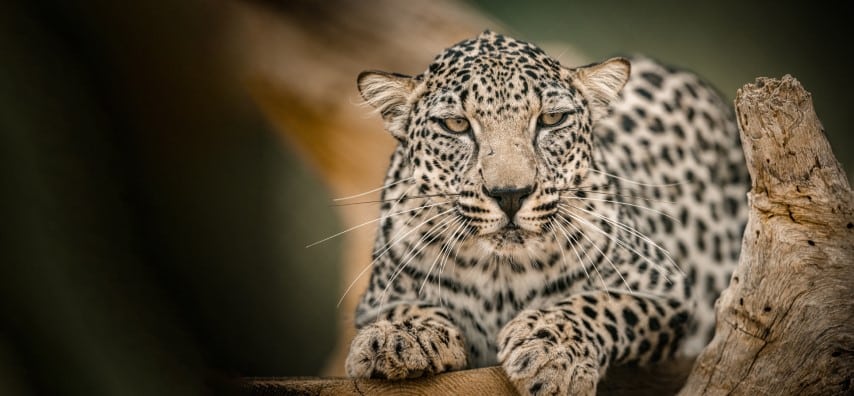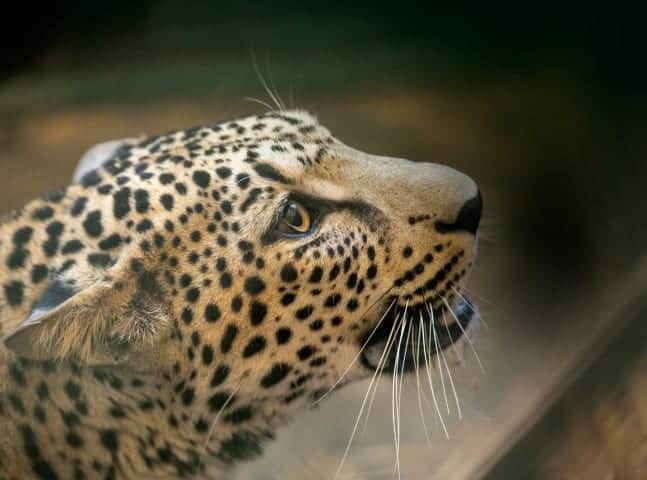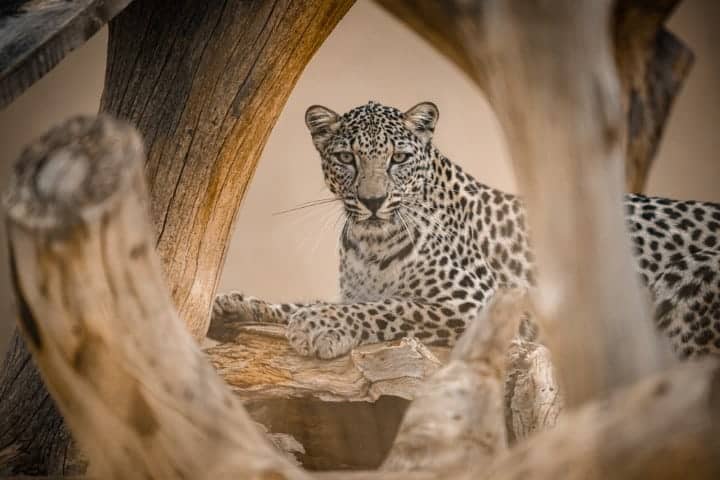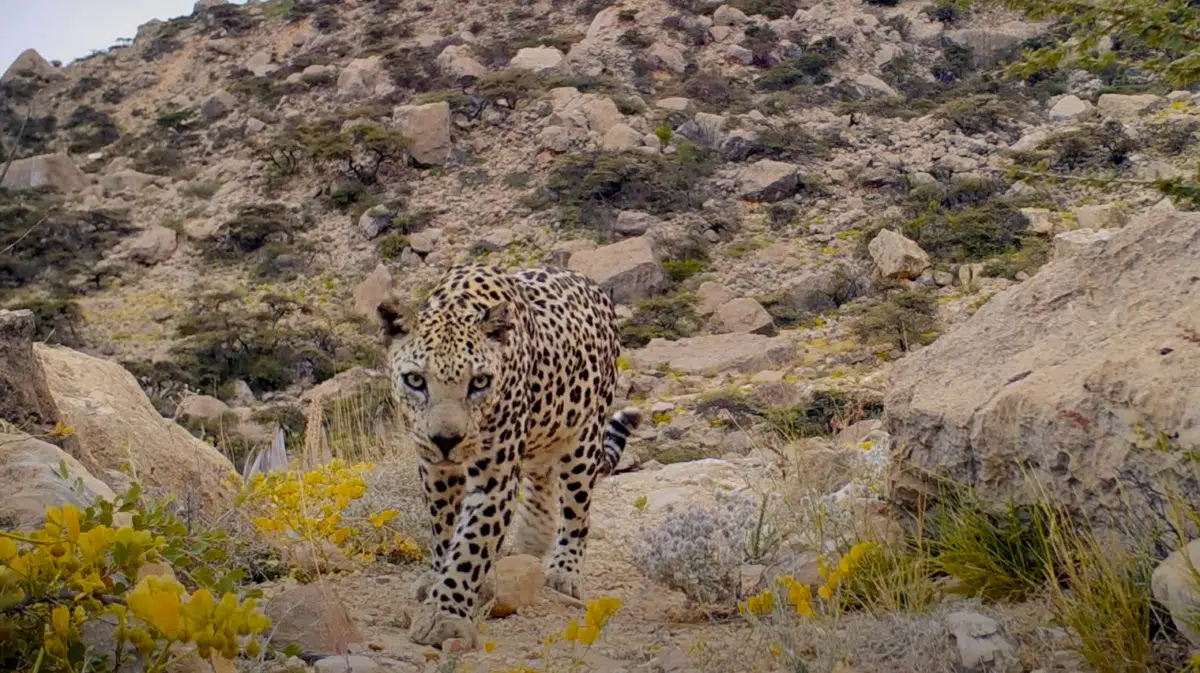The Arabian leopard is a critically endangered big cat with an estimated population number of fewer than 200 individuals. These majestic beasts inhabit Saudi Arabia, Oman, and Yemen.
Background

Dr Khalid Al Hikman is a researcher and guide based in Oman. He has dedicated his research to the ecology and conservation of these Arabian leopard.
Despite this, Dr Al Hikmani has only physically seen the elusive cats three times over 12 years, highlighting the difficulty in spotting this endangered species.
Research On The Arabian Leopard

Dr Al Hikmani uses remote cameras to capture images of the Arabian leopard. The footage is used to monitor the numbers of individual leopards and various other desert animals, including the common genet, desert hedgehog, striped hyena, ibex, and Arabian wolf, that inhabit Arabia.
One particular area being monitored is the Dhofar mountains of southern Oman, where an estimated 35 individual Arabian leopards reside. It was here where Steve Backshall, a naturalist, explorer, presenter, and writer, sought to capture the elusive cat on camera.
In the video above, you can see the Arabian leopard caught on film by Steve Backshall and the Expedition team.
The Arabian Leopard

The smallest leopard subspecies, these cats have powerful claws that help them traverse mountain ranges and deserts of the Arabian Peninsula. Their closest genetic relative is the African leopard.
The Royal Commission for AlUla has been established as a dedicated initiative for the conservation of Arabian species, including the leopard. AlUla has been designated as a nature reserve where conservationists work to ensure a viable and sustainably managed population of native species.
You may also like:
Join our Forum for free today!

- Glow-in-the-Dark Sharks & Other Fascinating Bioluminescent Fish - July 10, 2024
- Why Flamingos Are Totally Hardcore - July 3, 2024
- Nuclear Tech to Combat Poaching: Radioactive Rhino Horns - July 2, 2024

